How to grow fava beans – everything you need to know for delicious produce
Discover how to grow fava beans, also known as broad beans – tasty, versatile vegetables which are great for beginners
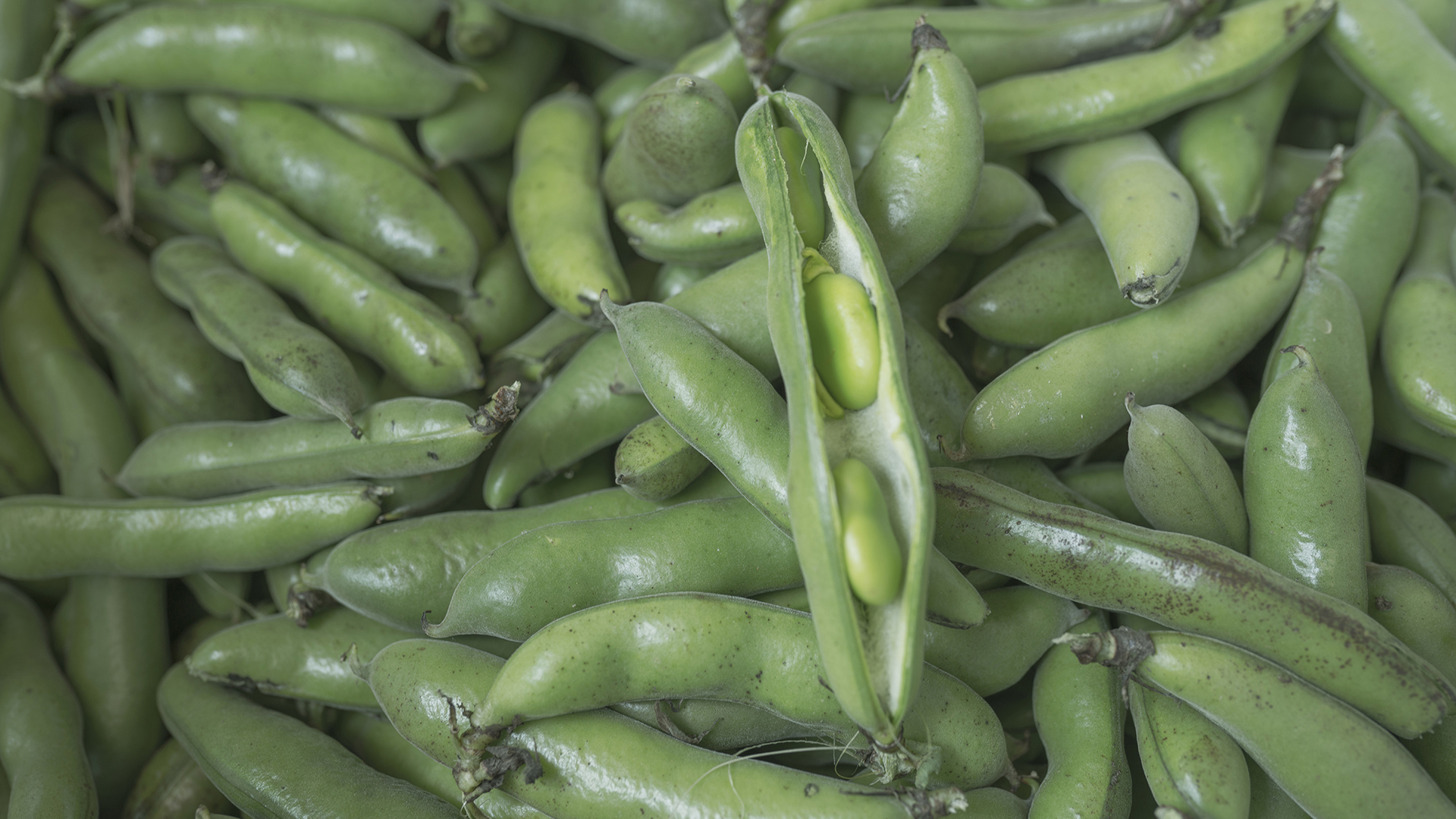
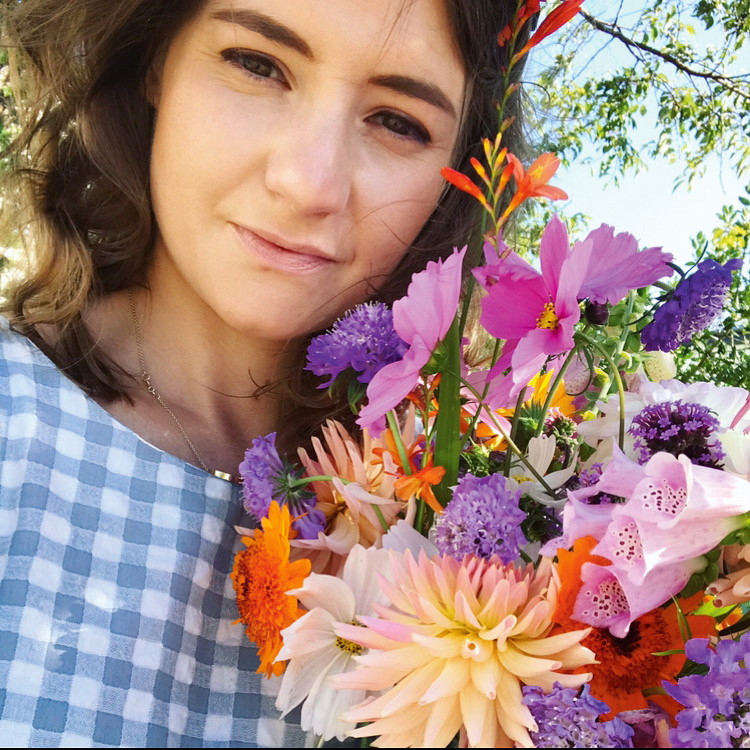
Learning how to grow fava beans from seed is easy – they are a brilliant vegetable for beginners and for growing with children. Also known as broad beans, they can be grown in the ground, raised beds and there are also dwarf varieties perfect for planters.
Usually eaten as beans shelled from their long seed pods, fava beans are an extremely versatile vegetable; they can be boiled, whizzed up into dips and are simply delicious eaten raw in salads. If you have a glut of fava beans they freeze well and they can also be dried for use over winter.
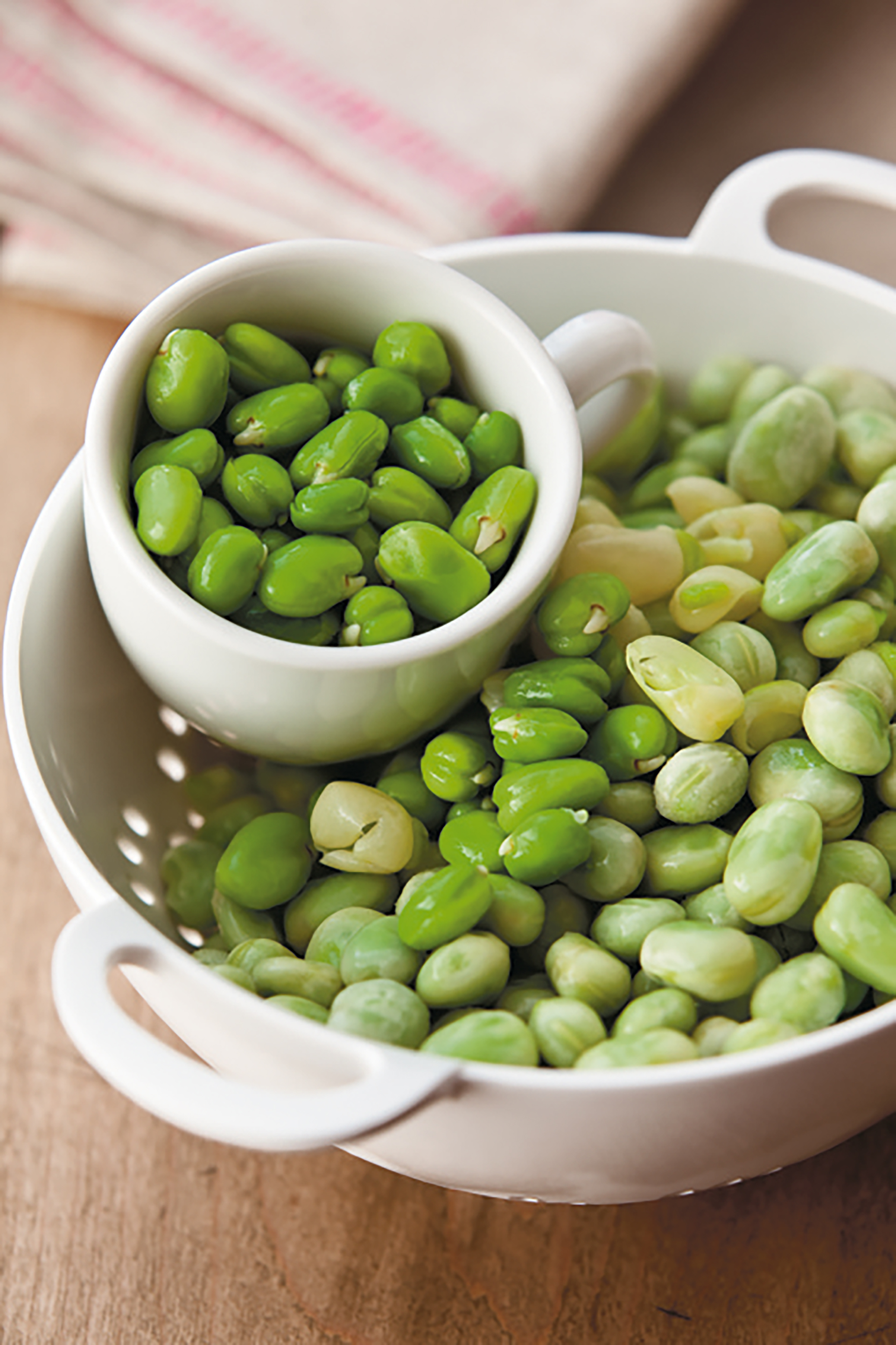
When to grow fava beans
Fava beans can either be sown in fall – October or November – for a crop that can be harvested in May/June, or in February – April for summer harvesting. If you are planning to plant them in autumn then be sure to choose a hardy variety which can withstand frost such as 'Aquadolce Claudia'. To ensure a plentiful crop it is best to sow successively.
Broad beans are best sown directly and the process is the same whether you are sowing them in fall/early winter or in spring. If you have heavy clay soil prone to water-logging then fava beans may be better sown undercover in module trays and planted out in spring. They like cool conditions growing best at below 15 degrees.
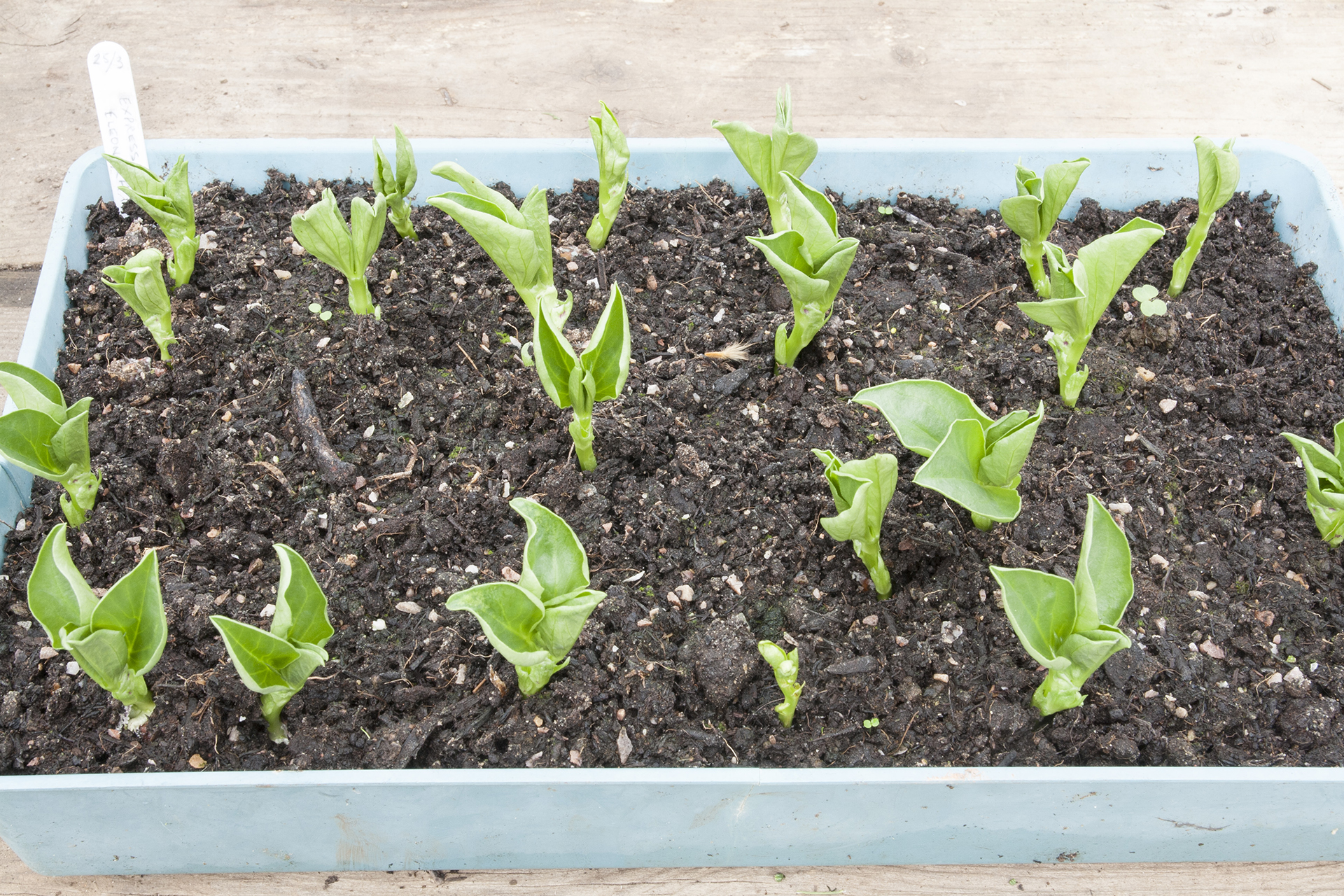
Where to grow fava beans
Fava beans are best sown in rich, fertile soil with good drainage. Choose an open spot that will receive plenty of sunlight.
‘Fava beans, like most beans, prefer to be sown directly into the soil outside,’ says Amy Enfield, Horticulturist for Bonnie Plants of Bonnie Plants.
‘They should be planted in a spot that gets plenty of sunlight each day. Since they can get rather tall (up to 4 ft) make sure they are planted in a spot where they won’t shade out neighbouring plants,’ she continues.
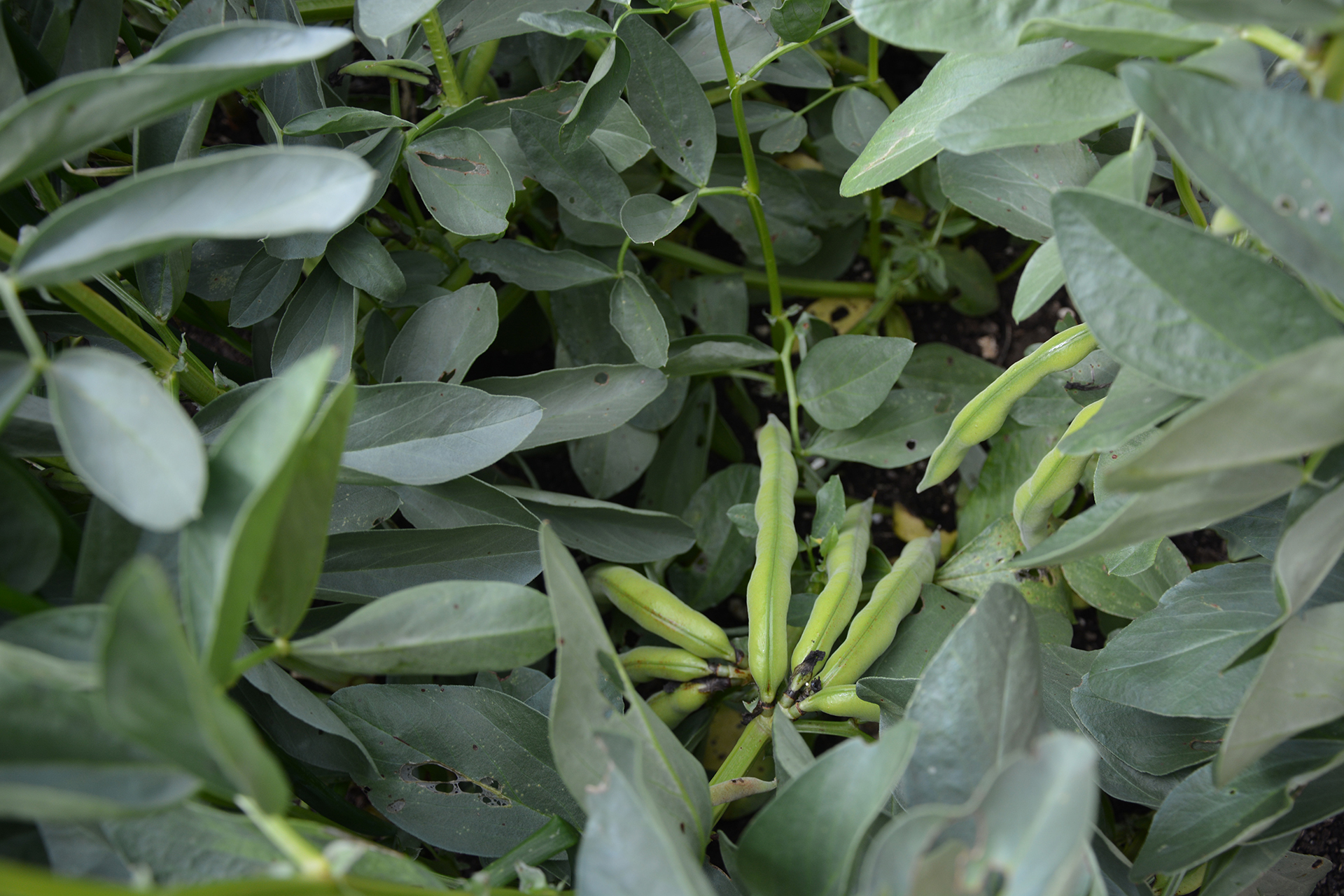
How to grow fava beans
Learn how to grow fava beans by following these simple steps:
Prepare your soil – Dig over the ground thoroughly, removing any weeds. The soil can be i proved by digging in organic matter or well-rotted manure.
Sow your seeds – Instructions will depend on the cultivator so always read the packet. Generally broad beans are best sown 2 inches (4cm) deep in rows 11-17 inches (30-45cm) apart. Sow each seed 9 inches (23cm) apart along the row, staggered where the seeds are sown along each row.
Space the rows – If you are sowing more than one set of rows then make sure to leave a 23 inch (60cm) gap between each pair to give access for harvesting. Alternatively, if sowing in beds, sow in blocks with each seed 9 inches (23cm) apart.
If sowing in autumn or early winter then cloches may be used to protect young plants in cold areas and to aid germination. Ideally plants should be 2.5cm before winter comes.
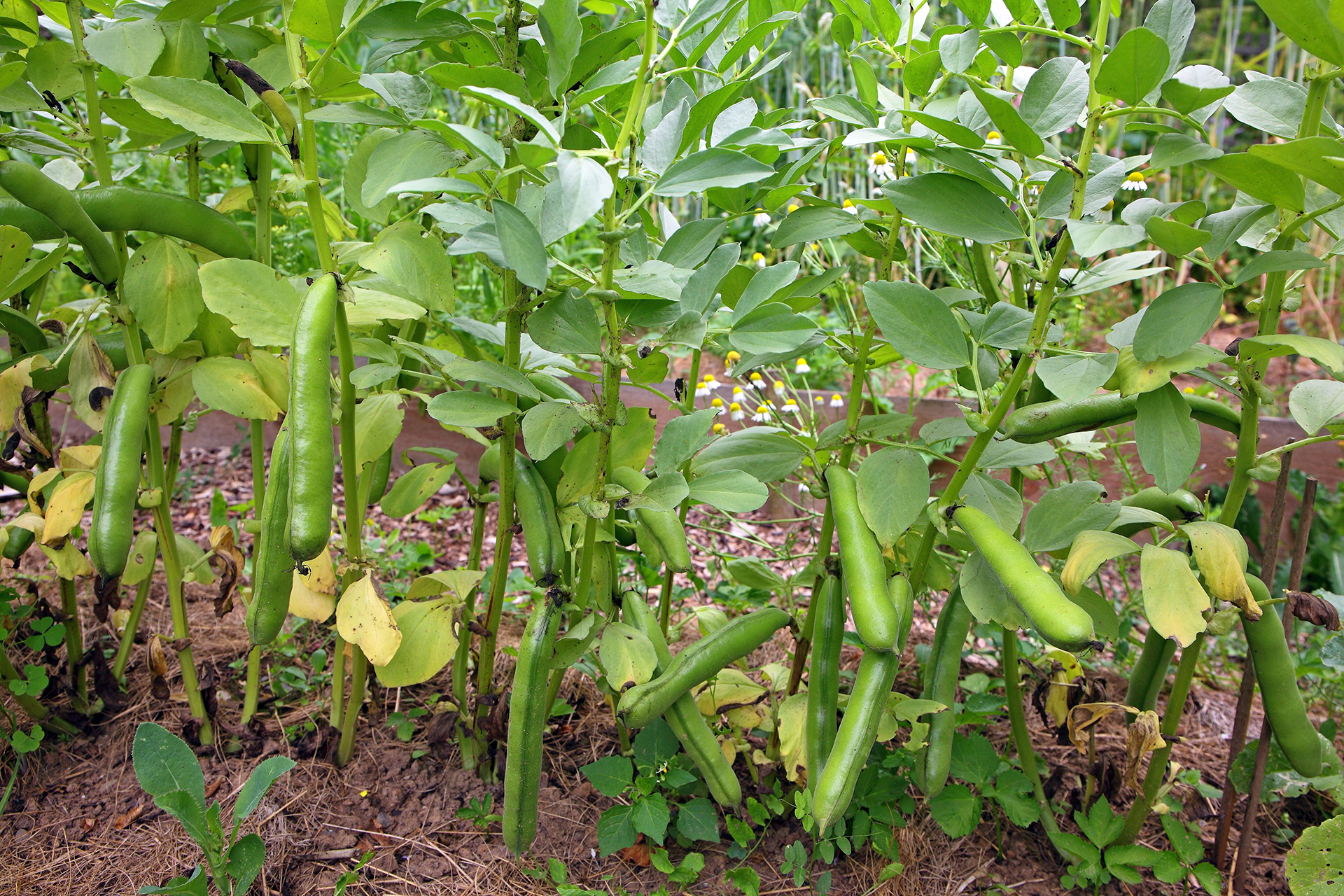
Water – fava beans will need to be kept well watered until they have germinated and are established. It is essential to water broad beans well during the flowering period when the pods are beginning to form.
Pinch out – When the plants begin to flower pinch out the growing tips as this will help to direct the plant’s energy into forming the beans.
Check for black fly – Fava beans are very susceptible to blackfly that nibble on the tender tips - pinching out the tips will help keep them at bay. A pesticide is not necessary and black fly will rarely affect the quality of the crop.
Fava beans can also be blighted by chocolate spot - a fungal disease which manifests itself in brown spots all over the plant. It may cause the plants to collapse if the stems get infected.
Stake the plants – When the plants reach 35 inches (90cm) they can be supported with a frame made from string stretched between bamboo canes.
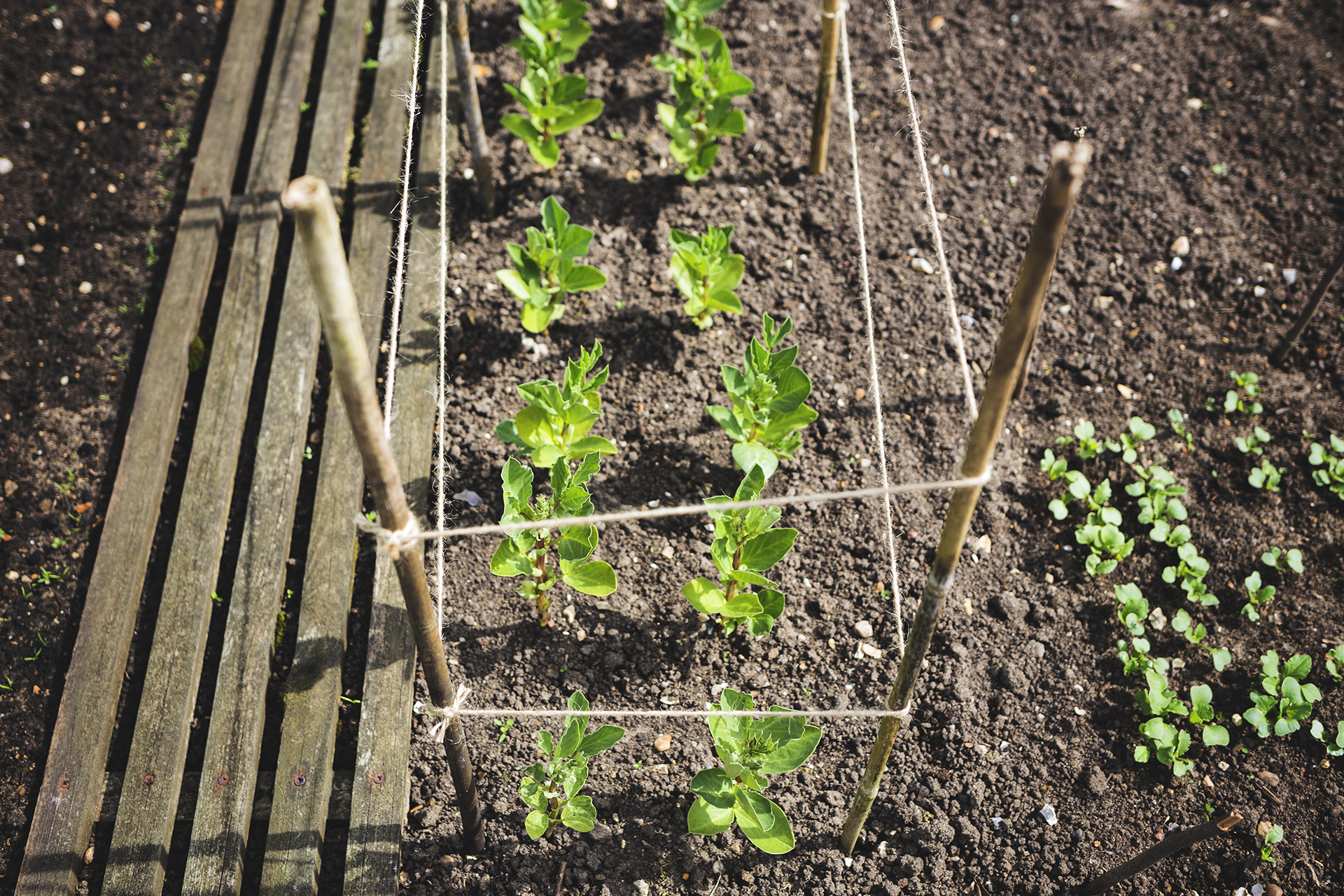
Do fava beans need a trellis
Unlike runner beans, fava beans are not climbing plants so do not need a supporting structure to cling to such as a trellis, however taller cultivators that reach 35 inches (90cm) or taller may need support. Sowing smaller cultivators in double rows will help the plants support each other.
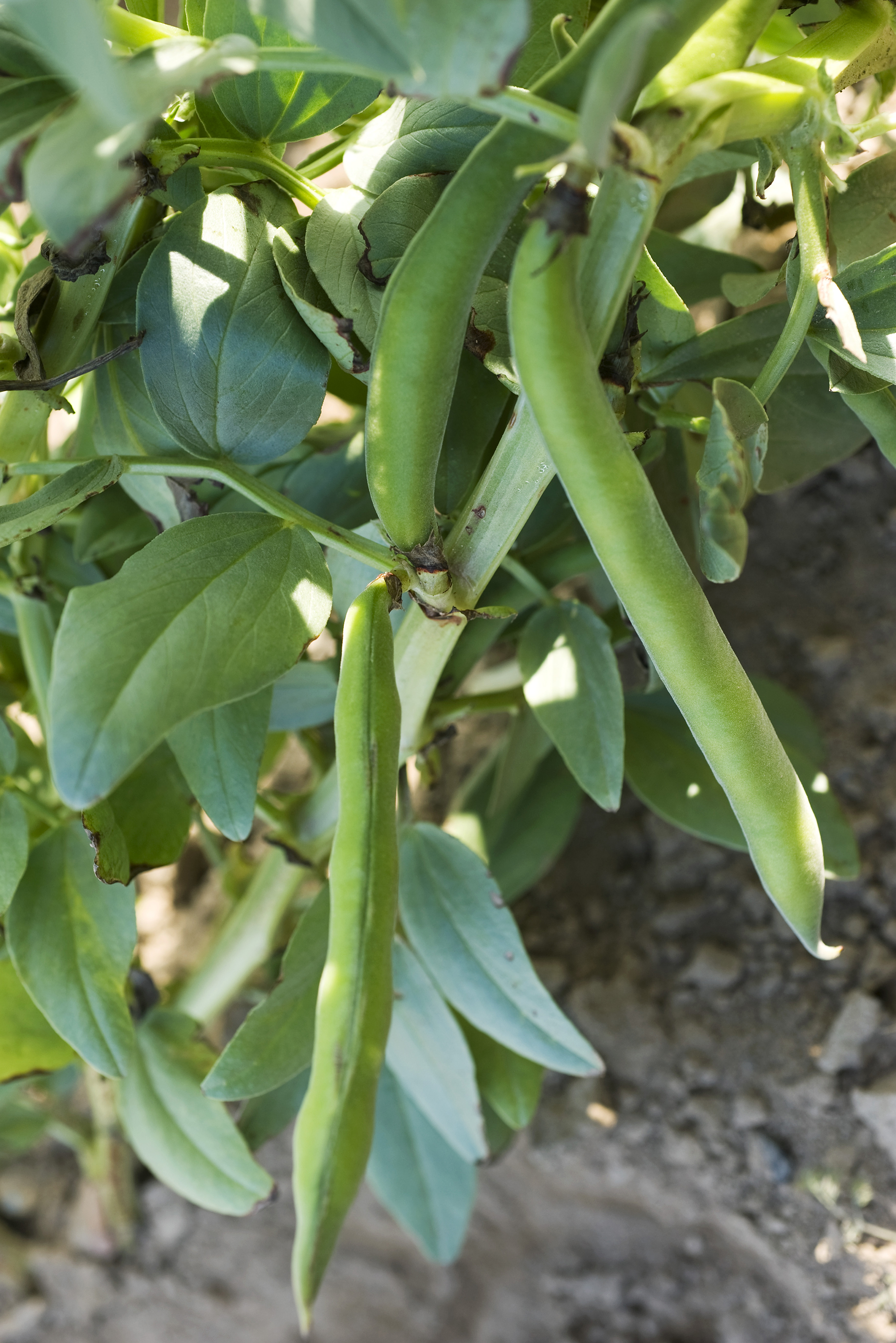
Do you need to stake fava beans?
Some taller fava bean varieties may require support as Amy Enfield, Horticulturist for Bonnie Plants of Bonnie Plants explains.
‘Because fava bean plants can get as tall as 4ft, they should be provided with support to keep them from flopping over, particularly as the beans start to develop and weigh down the branches.
'Since broad beans don’t form tendrils to grab onto trellises, they need a cage support system. One can be created using some stakes and twine, or simply add a tomato cage after they sprout.'

How do you care for fava beans?
Fava beans will need watering regularly until they are established. It is also important to keep them well watered whilst they begin to flower and set pods unless there has been lots of rainfall.
Once the plants are established, as with most vegetables, it is best to water well occasionally rather than little and often to encourage strong root growth. Watering little and often may result in shallow roots, whereas by watering occasionally will encourage plant roots to dig down for moisture.
Pinch out the tips when the plants begin to flower to encourage strong pod growth and to prevent damage from black fly. Pesticides are not necessary and black fly rarely damages the crop.
Support tall plants using bamboo canes and string.

Harvesting fava beans
Fava beans can be picked and eaten as whole pods in their immature state (before the beans inside the pods have formed) but they are usually consumed as beans harvested from the shelled pods.
Podded fava beans are best eaten when they are young and tender as they taste sweeter. They can be picked when you can see the beans swelling inside the pods. 'Harvest regularly – the more you pick, the more the plant will produce,' says gardening expert Leigh Clapp.
Can fava beans be grown in containers?
Fava beans can be grown in containers, for this purpose choose a dwarf variety such as Sutton. Awarded an RHS Award of Garden Merit, the sutton variety has neat compact plants which grow to 30cm tall. They are good for freezing and produce delicious tender beans.
Sign up to the Homes & Gardens newsletter
Design expertise in your inbox – from inspiring decorating ideas and beautiful celebrity homes to practical gardening advice and shopping round-ups.

Pippa is a contributor to Homes & Gardens. A graduate of Art History and formerly Style Editor at Period Living, she is passionate about architecture, creating decorating content, interior styling and writing about craft and historic homes. She enjoys searching out beautiful images and the latest trends to share with the Homes & Gardens audience. A keen gardener, when she’s not writing, you’ll find her growing flowers on her yard for styling projects.
-
 7 ways to decorate with wood – designers share the best ways to make the most out of this versatile material
7 ways to decorate with wood – designers share the best ways to make the most out of this versatile materialThis is how the design experts embrace the timeless natural beauty of decorating with wood
By Karen Darlow
-
 6 items you should always unplug before leaving the house – banish 'phantom power' usage
6 items you should always unplug before leaving the house – banish 'phantom power' usageDon't let these mistakes cost you a small fortune
By Sophie Warren-Smith Published